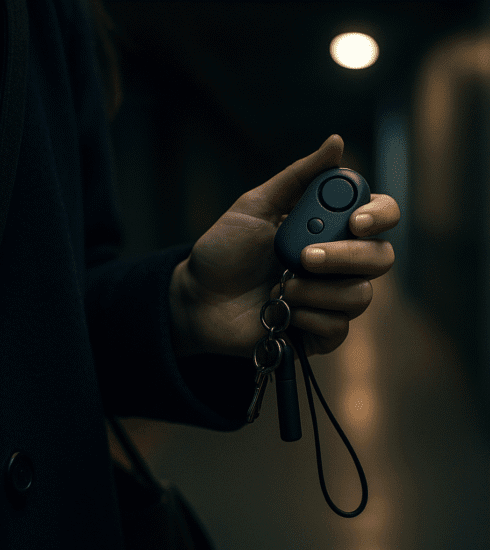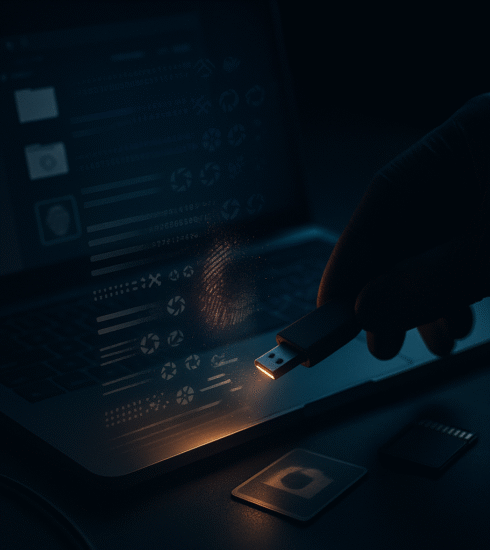Threat Recognition: Reading Hands, Objects, Tension, Intent
I have stood close to people who intended to do harm. In those moments, the environment fades and your focus narrows to the human being in front of you. Your survival depends on reading the signals they broadcast before any overt action begins. This is not about paranoia. It is about recognizing the pre incident indicators that precede violence. True
Violence is a process, not a single event. Your goal is to recognize the early stages of that process. The hands will tell you everything if you are willing to listen.
The Primacy of the Hands in Threat Assessment
Every violent act requires a tool and that tool is managed by the hands. You must train yourself to look at the hands of every person you engage. This is your first and most important rule. A person’s intentions are often telegraphed by what their hands are doing or where they are hiding.
Empty hands are not safe hands. They can become fists or grappling tools in a fraction of a second. Look for clenching, rubbing, or rhythmic flexing of the fingers. These are signs of psyching up, a physiological preparation for explosive action. The baseline state of most people is relaxed hands, so any tension is a notable deviation.
Watch for hand placement that is unnatural or deliberately obscured. Hands shoved deep in pockets can conceal a weapon or a key held as a spike. Arms crossed tightly can hide a blade in the opposite sleeve. A person holding a jacket or bag in a way that screens their hands is controlling your field of view for a reason.
Interpreting Object Interactions and Pretexts
Objects in the environment can be weapons or shields. How a person interacts with common items reveals their mindset. Someone fiddling with a pen might be nervous, but someone deliberately palming it and adjusting their grip is weaponizing it. A drinking glass can be thrown, a book can hide a striking surface, a belt can become a flail.
Be wary of individuals using objects to create a pretext for closing distance. Someone asking for the time while holding a phone is normal. Someone showing you a broken phone and insisting you look at it up close is controlling the engagement range. They are manufacturing a reason to get inside your reactionary gap, the critical space you need to defend yourself.
Anomalies are your guide. A person wearing a heavy coat on a warm day is an anomaly. A person carrying a rigid, tube like object inside a loosely held newspaper is an anomaly. A person who enters a space and immediately picks up a heavy object without a clear purpose is an anomaly. Your mind should flag these inconsistencies for further assessment.
Do not look at the face. Look at the shoulders. The shoulders will drop and tense a split second before the hands move to strike. This is an unconscious physiological response you can see if you are watching for it.
Reading Baseline Deviations and Tension Signatures
Every person has a baseline level of comportment and movement. Threat recognition involves spotting significant deviations from that baseline. A calm person suddenly becoming hyper still is as much a warning sign as a fidgety person becoming calm. This shift often indicates the cognitive load of finalizing a plan or preparing to execute.
Look for tension in the neck and shoulders. The trapezius muscles will often ride up toward the ears, and the neck may become rigid. This is a classic flight or fight response, flooding the body with adrenaline and preparing the major muscle groups for action. The jaw may clench, and the lips may tighten or press into a thin line.
Breathing patterns offer a clear window into autonomic arousal. Normal breathing is relatively deep and rhythmic. Stressed breathing becomes shallow and high in the chest or may be held entirely. You might see a sharp inhale or exhale just before movement, a final psych up breath. This is a reliable and often overlooked indicator of imminent action.
Distinguishing Intent from Mere Aggression
Anger is an emotion. Intent is a decision. You will encounter many angry people who pose no physical threat. The key is to identify the person who has moved past emotion and into the resolution to act. Their emotional state may actually become more controlled and focused as they commit to their course of action.
This is where target glance becomes critical. A person resolving to attack will almost always look at their intended target immediately before moving. This is a final confirmation, a last minute targeting check. If a shouting person looks at your eyes, they are engaged in a conflict. If they drop their gaze to your chin, throat, or center mass, they are likely targeting for a strike.
Foot positioning reveals strategic intent. Bladed stances, where one foot is placed back, are fighting stances. It is a natural and trained posture for generating power. A person who subtly shifts into a bladed stance during a conversation is not merely arguing. They are physically preparing to engage, and that is a critical distinction you must recognize.
The Concept of Furtive Looks and Security Checks
Before acting, many individuals will perform a final security check of their surroundings. This is a furtive, rapid glance to their flanks or behind them. They are checking for witnesses, for cameras, or for your backup. It is a look that is entirely different from a casual scan of the room. It is sharp, purposeful, and quick.
This behavior is a strong indicator of criminal intent, as it shows concern for the consequences of the impending action. A person about to assault you may glance over your shoulder to ensure no one is approaching to help you. A shoplifter will perform this look before concealing an item. It is a nonverbal admission that what they are about to do carries risk of intervention.
Recognizing this look requires you to be aware of a person’s overall pattern of observation. Everyone looks around. But a person who switches from engaged conversation to a sudden, sharp glance at the exits is not simply bored. They are gathering critical information for their next move, and you should be gathering information about them.
Environmental Positioning and Egress Control
How a person positions themselves in relation to you and the environment speaks volumes. A professional will never let you position them with their back to a wall or a corner. They will constantly manage angles to maintain options. Someone with ill intent may try to do the same to you, subtly maneuvering to control your avenues of escape.
Be conscious of anyone who attempts to move you or guide you into a more isolated or confined area. This could be as simple as stepping to the side during a conversation and forcing you to turn, putting your back to a blind spot. It is a method of controlling the battlefield before the first blow is ever thrown. Your response should be to calmly reposition and regain control of the space.
Notice proximity. Different cultures have different comfort zones, but any sudden, uninvited invasion of personal space is a dominant and controlling behavior. It is designed to overwhelm your senses and put you on the defensive. It is also the optimal distance for a sudden attack. Maintaining a safe reactionary gap is a fundamental defensive practice.
Verifying Your Assessment and Legal Response
Observation is not accusation. Your internal assessment must be verified before any action is taken. If you see clenched hands and a target glance, your first response is to create distance, not to engage. Creating space is a neutral and legal action that provides you more time to confirm the threat and decide on a course of action.
Verbal challenges can be a form of verification. A calm, direct question like “Can I help you with something?” or “Is everything alright?” serves two purposes. It can de escalate a situation based on a misunderstanding. It can also cause a potential threat to break their focus and reveal their intent through a startled or aggressive response.
Your ultimate goal is to avoid physical conflict. The best fight is the one that never happens. Your observations should guide you toward avoidance, de escalation, and egress. If you must act, your actions must be proportionate and lawful, focused solely on creating an opportunity to remove yourself from danger and contact the authorities.
Trust the process you have observed. Your subconscious mind is excellent at piecing together micro indicators that your conscious mind has not yet processed. That feeling of unease, that gut feeling that something is wrong, is a valid signal. It is your body’s way of telling you that it has recognized a pattern of threat. Do not dismiss it. Create space, verify your assessment, and be prepared to act. Your awareness is your greatest asset.





